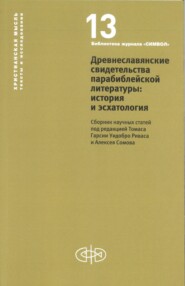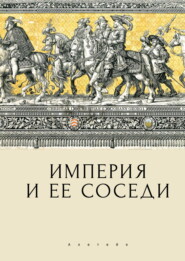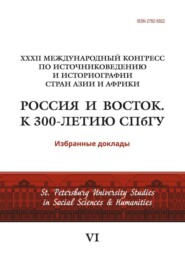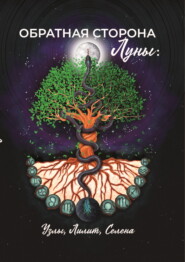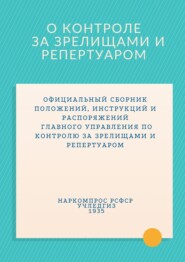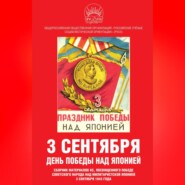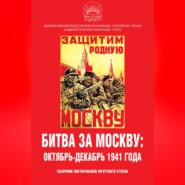По всем вопросам обращайтесь на: info@litportal.ru
(©) 2003-2025.
✖
Россия и США: познавая друг друга. Сборник памяти академика Александра Александровича Фурсенко / Russia and the United States: perceiving each other. In Memory of the Academician Alexander A. Fursenko
Настройки чтения
Размер шрифта
Высота строк
Поля
Despite the more repressive means by which the Russian government sought to control the Pale’s Jews, Petrovsky contends that the Russian courts dealt with Jews more fairly and even-handedly in this period than later. The effectiveness of Petrovsky’s many concrete examples in veiling the literal truth of his assertions seems most questionable in this instance. Although its overall truth relies on the assumption that Jews generally received far worse treatment under the last two Tsars, the advent of the 1864 judicial reform alone and the greater participation of Jews in the judicial system suggest the need for verification of that assumption.
In sum, Petrovsky’s idealized image of the Pale’s pre-reform shtetl, in its broader outlines, serves as a counter-image to that later drawn by Aleichem and many Yiddish writers. Its importance lies less with its literal truthfulness than its usefulness in raising questions about Russian Jewry in both halves of the 19th Century. In the first instance, it offers a “new history”, an alternative to the image of the shtetl as a locus of victimization by documenting much of the diversity, assertiveness, and vitality of Jewish endeavors and occupations. It shows us that the Jews of the newly created Russian Pale of Settlement did not take their poverty and forced disabilities sitting down, but took advantage of the weaknesses in Tsarist governance and enforcement, the government’s rivalry with resident Polish landowners, and the venality of local officials to survive and sometimes even flourish in their shtetl enclaves.
Petrovsky’s shtetl image casts light on the character of the post-reform shtetl as well. The energy, vitality, and defiance he describes changed in character, but surely did not disappear after the reforms and after the 1881 pogroms. As the challenges to Jewish existence grew more demanding and more threatening, so did Jewish responses. The study not only modifies our understanding of life in the Jewish Pale in the earlier years of Russian rule, but also suggests greater depth and complexity to Jewish responses in the later period of unprecedented upheavals, heightened antisemitism, and Jewish victimization, both within and without the shtetl. Finally, Petrovsky’s image of the shtetl may be said not to have discredited the truthfulness of the image created by Yiddish writers of the later period, but to have revealed it as marking the immense changes that had invaded and overtaken life in the Pale.
Returning to that later period and to the theme of pogroms, two recent collections of articles treat anti-Jewish violence in Russia and other parts of Europe from 1881 to the eve of the Second World War. Each of them contains a range of topics grouped around the themes of violence and antisemitism.[208 - Anti-Jewish Violence. Rethinking the Pogrom in East European History, ed. Jonathan Dekel-Chen, David Gaunt, Natan M. Meir, & Israel Bartal (Bloomington: Indiana UP, 2011). Sites of European Antisemitism in the Age of Mass Politics, 1880–1918, ed. Robert Nemes & Daniel Unowsky (Lebanon, NH: Univ. Press of New England; Brandeis UP, 2014). Essays in both volumes include topics that go beyond the temporal and geographic limits of this essay.] Despite the diversity of topics and approaches, the two collections share common assumptions and may be taken to illustrate the current state of pogrom studies.
The commonest assumption they share is the interchangeability of the terms “antisemitism” and “pogrom”; one is taken to enfold and encompass the other, like two embracing figures, even though many of the articles treat antisemitism as attitude and ideology without a violent outcome. At the same time, most of the articles that treat actual violence against Jews do not question the meaning and role of antisemitism in making for the violence, but regard it as a major, if not the principal, contributor. Thus, antisemitic writings and publicism are joined to anti-Jewish violence as part of the same reality rather than being considered as separate realities, especially in regions of high illiteracy and sharp distinctions between classes and between town and country populations. Although no explicit claim is made, this assumption is what lends unity to an otherwise diverse array of articles treating locales from England to Romania and Eastern Siberia and topics ranging from the scandal and trial of an Austrian Jewess imposter to military pogroms during World War I. The assumption is imbedded in the very structure of these conference-based collections. At the same time, the very diversity of the topics they contain and their lack of connectedness in space and time has compelled them to link violence and Judeophobia with the specific, local, and contextual circumstances applicable to each case. Most of the essays cite the “usual suspects” among explanations: ethnic or religious hostility, alleged economic competition and exploitation, legal discrimination, alleged political disloyalty. And, although their explanations do not yield a single meaning for the term “pogrom”, they also frame questions that look beyond those stock considerations. These essays show that “antisemitism” and the violence often associated with it has a thousand faces, taking on a different character and meaning, depending on its local history and the circumstances of its manifestation.
The one essay that attempts a definition of “pogrom”, giving it a single face, and applying it to all times and cases turns out to be the exception that proves the rule.[209 - David Engel, “What’s in a Pogrom? European Jews in the Age of Violence”, Anti-Jewish Violence, p. 19–37.] The definition worked out has the virtue of seeking circumstances beyond antisemitism as the causes of anti-Jewish violence. Yet it is so general as to yield only the palest explanatory potential, so broad as to be applicable not only to all anti-Jewish pogroms, but even beyond the parameters of Jewish experience, to other instances of “inter-communal violence”, as the author admits.[210 - Ibid., p. 35. The richness and worth of the other essays in this volume lie in the degree to which they go beyond Engel’s formal definition.] Although the impulse to seek wider and more general explanations is endemic to historical inquiry, the worth and creativity in these essays lie in demonstrating the protean nature of antisemitism, its adaptability to many forms of conflict and controversy, public and private, and the diverse, complex shapes that it has taken.
The larger methodological question this raises is the relationship between affect and action, between word and deed, between, in our context, antisemitism as ideology or attitude and pogroms. Those essays that fall in our period but outside Russia are sufficiently distinct to suggest some mid-level generalizations that both contrast with and illuminate the Russian situation. Let us begin with four essays treating anti-Jewish violence in Galicia, Moravia, and Croatia, all parts of the Austro-Hungarian Empire, plus Romania. In each case they occurred on a smaller scale in their numbers and destructiveness, compared to events in the Russian Pale in the same prewar decades.[211 - Daniel Unowsky, “Local Violence, Regional Politics, and State Crisis: the 1989 Anti-Jewish Riots in Habsburg Galicia”, Sites of European Antisemitism, p. 13–35; and in the same volume: Julia Onac, “The Brusturoasa Uprising in Romania” (79–93); Michal Frankl, “The Moravian Anti-Jewish Violence of 1899 and Its Background” (95–114); and Marija Vulesica, “ ‘An Antisemitic Aftertaste’: Anti-Jewish Violence in Habsburg Croatia”, (115–134).] This was due in part to a more consistent opposition to anti-Jewish violence on the part of both local and central Habsburg authorities. The four studies deal predominantly with disorders among peasants, due perhaps to the relative absence of pogroms in the Empire’s large cities (outside the Polish provinces), where the police exercised a firmer hold on public order. In two cases, the conflicts were not binary, affecting only Jews and the native nationalities, but involved German and/or Hungarian policies and languages. In Moravia and Croatia violence was disproportionately directed at Jews, perceived as partisans or even as agents of the hated nationalities. In Galicia and Romania, the violence was precipitated by a mixture of resentment of Jewish economic exploitation and longstanding antisemitism, reinforced by the proactive role of Catholic clergymen. All these essays present a mixture of attitudinal antisemitism and resentments at the position of Jews in social and political structures during the birthing of new nationalisms. In Moravia, for instance, Jews voted with the German parties which defended Jewish rights, earning the resentment of Czech nationalists.
Three essays on pogroms in the Russian Northwest find that the great resentment of Russian and/or Polish domination ameliorated Lithuanian and Belorussian relations with Jews in their region.[212 - Klaus Richter, “Horrible Were the Avengers, but the Jews Were Horrible Too: Anti-Jewish Riots in Rural Lithuania in 1905”, Sites of European Antisemitism, p. 199–214; Darius Staliunas & Vladas Sirutavicius, “Was Lithuania a Pogrom-Free Zone? (1881–1940)”, and Claire Le Foll, “The Missing Pogroms of Belorussia, 1881–1882: Conditions and Motives of an Absence of Violence”, Anti-Jewish Violence, p. 144–158, 159–173, respectively.] These borderlands of both the Empire and the Pale, if compared to the greater violence of the southern and southwestern Pale, are distinguished by the relative absence of pogroms. In contrast to the Habsburg lands, where Jews were perceived as allied with the resented German or Hungarian overlords, here Jews were seen as allies against Russian and Polish domination. The article by Staliunas and Sirutavicius explains the outburst of anti-Jewish violence during the Nazi occupation as wholly due neither to Nazi influence nor to a native antisemitism. Lithuanians lived through the Russian imperial and interwar eras in relatively peaceful coexistence with Jews, given the size of the Jewish population and the antisemitism of neighboring regions. It was mostly the trauma of Soviet occupation in 1939 and the divergence of political leanings between Lithuanians and Jews that precipitated mass anti-Jewish violence aimed at Communism considered as a Jewish enterprise.
Klaus Richter’s detailed study of a small pogrom in eastern Lithuania in 1905 does not contradict those findings, but uncovers nuances that shed light on the nature of pogroms far beyond Lithuania. In exploring the causes of fires in the shtetl of Duseto that precipitated a pogrom after destroying several buildings owned by local peasants, Richter leaves open the possibility that Jews could have started them, as the peasants insisted, despite the findings of an official investigation that exonerated them. He does not contend that Jews started the fire, only that Jewish commercial competitors were capable of such tactics against rival peasant merchants, suggesting that the kind of aggressive self-assertion described in Petrovsky’s shtetl study was probably still alive in shtetl’s of the 1905 era. The willingness of Jews in remote Duseto to assert and defend themselves is related to a second suggestive observation by the author, namely that such behavior surprised the police, who
against the backdrop of the large scale pogrom in Kishinev, the police in Lithuania grew extremely cautious, as large crowds of Lithuanian Jews gathered to mourn their Bessarabian brethren. This time, the officials feared the Jews more than the Lithuanian peasants… The police superintendent (pristav) of Vilnius reported on the high degree of determination among Jews to strike back against pogromists beyond the limits of their own shtetls. On May 25, 1903, for instance, he encountered a crowd of more than five hundred Jews who wanted to make their way to nearby Vileyka… where allegedly there had been rumors of an impending pogrom. The superintendent dispersed the crowd with the aid of mounted policemen. With such measures, the police reinforced the conviction among peasants that the tacit rules of anti-Jewish riots excluded the ability of Jewish resistance.
Richter sees Jewish self-defense as breaking an unwritten code about how pogroms were supposed to work, thereby angering the pogromists and providing them an “alibi for murder”.[213 - Richter, “Horrible Were the Avengers”, Sites of European Antisemitism, p. 204. In grouping 1903 events with those in 1905, Richter is apparently following current convention in considering the dynamics of pogroms in the Russian Empire following the Kishinev pogrom to have been linked and to have culminates in those in 1905.] Quoting a German study, he suggests that Jewish resistance broke with the “historic pattern of anti-Jewish violence [that] demanded submission, huddling in houses, a passive acceptance of the script of a ritual drama”.[214 - Ibid., p. 205–6, quoting Helmut Walser Smith, The Continuities of German History: Nation, Religion, and Race across the Long Nineteenth Century (Cambridge: Cambridge UP, 2008): 155.] The notion of pogroms as the enactment of a social ritual with its own rules has been mentioned by others, but has yet to receive the attention that it would seem to deserve.[215 - E.g., Klier, Russians, Jews, and the Pogroms, p. 87. See also Klier’s essay “The Pogrom Paradigm in Russian History”, Pogroms: Anti-Jewish Violence in Modern Russian History, ed. John D. Klier and Shlomo Lambroza (Cambridge: Cambridge UP, 1992): 13–38.]
These diverse essays on anti-Jewish violence explore important new avenues of inquiry, seconding and reinforcing John Klier’s conception of pogroms as a prism through which to examine Jewish-gentile relations in all their complexity. The result is a view of pogroms that makes them part as much of Russian (Czech, Romanian, Galician, etc.) history as of Jewish history. Antisemitism was the common coin of the violence, to be sure, but it took many forms, combining with and shaping itself to diverse other grievances and locales and performing varying functions for the non-Jewish populations involved. Like Klier’s study, the essays in the pogrom collections show Jewish-gentile relations to have been an interactive process. Klier’s embattled Jewish elites interacted with Russia’s highest governing authorities, their principal opponents. In Austria-Hungary Jews had the protection of the Habsburg authorities to a degree not possible in Russia. However, pursuing their own interests during a period of growing nationalist exclusionism, they also encountered violent opposition, though more sporadically and on a smaller scale than occurred in Russia.
All this argues against efforts to find a single definition of the causes and meaning of pogroms. At the same time, we are not left with the prospect of treating every pogrom as a unique event. These essays suggest instead that anti-Jewish violence can be most accurately understood in specific historical contexts, be they Klier’s world of relations between government policy, personnel, and Jewish leadership, or the clash of East European new nationalisms with native Jewish populations, or Frankel’s diachronic study of Russian-Jewish nationalist and socialist politics coming to birth in a failing empire beset by revolutionary oppositions. All three of these contexts were present in microcosm in Kiev, where Jewish leaders interacted with the city’s political and business elite, where Jews became political scapegoats for a rising nationalist movement, and where they responded with new political movements of their own, both moderate and radical.
The studies of Meir, Hillis, and Petrovsky highlight other historical aspects of anti-Jewish violence, other differences that time and place have made in its quality and effect. Whether Kiev’s Jews represented some kind of Jewish metropolis, their history of both success and trauma was clearly the product of the specific restrictions and opportunities that their unique position in Kiev presented them. By contrast, Petrovsky’s study of the smaller towns and settlements in Kiev’s hinterland suggests that the violence Jews suffered in those locales was tempered by greater routine and stability and a simpler rivalry with a gentile population that shared their shtetl residency and most of the same rural hardships. Although this did not rule out violent treatment by gentile neighbors, it was part of a social arrangement in which Jews stood on a more equal footing with them than was possible in large, impersonal places like Kiev.
Taken together, the works considered here signal a new approach to the history of Russian Jews in the late imperial period. They argue that the growing intensity of anti-Jewish violence in the 1880–1914 period was due to much more than the preachings of antisemitic ideologues and that pogrom histories need to be constructed on the basis of a more detailed and more holistic consideration of specific events.[216 - As Richter’s article exemplifies and the comments on method of Daniel Unowsky and Hillel J. Kieval indicate (Sites of European Antisemitism, chapters 10, 1, and the Afterword, respectively).] They suggest greater recognition is due the fact that Jews took an active hand in providing for their own defense and well-being and, while certainly not deserving of the violence visited on them, were not wholly passive and innocent victims of hostile Slavs and Christians. They show that the origins of anti-Jewish violence should be sought in the interactive relation between Jews and gentiles, however asymmetric and dysfunctional, and not exclusively in the hostility of Judeophobic rioters, even though their prejudice, phobias and violent overreaction made them the usual, principal initiators of the violence.
Alfred J. Rieber. Social and Political Fragmentation in Imperial Russia on the Eve of the First World War[217 - This paper was originally delivered at the Conference on the First World War, Moscow, June 2014. I am grateful for the invitation and the stimulating comments by colleagues at the conference.]
That the strains and trauma of the First World War contributed to the collapse of the tsarist monarchy is a truism that leaves unanswered several interrelated questions. Why did the collapse of old regime occur so suddenly in the capital and then spread so rapidly throughout the rest of the country; and why did it fail to generate any visible measure of support from its erstwhile defenders to restore it? Finally, why did Provisional Government collapse so rapidly in its turn, giving way to a complex smuta (civil strife) among multiple political contenders for power? This essay seeks to address these questions by examining the particular characteristics of change in the deep structures of imperial Russian society and politics in the decades leading up to 1914.
In the two centuries from Peter the Great to the First World War, the autocratic rulers and the ruling elites displayed a remarkable flexibility in responding to the foreign and domestic challenges to the security and stability of the state. In constructing a multi-cultural empire, they experimented in creative ways in attempting to assimilate newly conquered territories on the periphery of the center of their power. The great bursts of domestic reform under Catherine II, Alexander I and Alexander II were connected by a thin membrane of smaller changes and preparatory activities especially in the field of education of the social elites. Thus the process of reform was continuous, although its rhymes were irregular and the work as envisaged by the reformers often frustrated by entrenched interests. Nor did the innovations abolish existing institutions and long established practices. Instead they were accretions, increasingly weighing heavily on the body politic and social structure. Consequently, the process of state building was interrupted and incomplete to the very end of the old regime. It was due to the underdeveloped institutions of the empire and the arbitrary, centralized nature of the reforms combined with the limited resources of the autocracy to implement them that produced the effect of laying down of sedimentary strata, imposing new social and political forms on the old. At the same time, the pressures exerted by rapid economic change and the shock of military defeat in 1905 had the simultaneous and cumulative effect of intensifying fragmentation within these separate layers of society and state administration. By 1914 the social and political forces of the Empire were deeply divided and ill-prepared to withstand the trauma of modern war.
This essay seeks to explore four aspects of the layering of the archaic and the modern and the fragmentation of society and politics in the evolution of the Russian state and society as a consequence of the belated and uneven appearance in the course of Russian history of four great transformations experienced by all the major European powers during the previous century. The first of these was the industrial revolution and the formation of an integrated capitalist economy; the second was a political revolution which overturned absolutist rule in England, the Netherlands, France and much of the rest of Europe west of Prussia and the Habsburg lands by the mid nineteenth century; the third was the national state building project which culminated in the unification of the fragmented German and Italian states, the independence and fusion of Moldavia and Wallachia into a Rumanian state, the fusion of Eastern Rumelia with Bulgaria and the enlargement of Greece; the fourth was the rapid growth of urban society where intermediate social groupings, traditionally but misleadingly reified into the bourgeoisie and proletariat, challenged the political and cultural preeminence of the landed nobility.
Historians continue to debate the extent to which these transformations weakened or destroyed the institutions of the old regime throughout Europe. Arguably, every state retained pockets of “feudal survivals”. Industrialization began as a regional phenomenon and penetrated slowly from urban to remote rural and mountain areas; representative institutions and responsible ministries were slow to evolve toward liberal democracies; national integration proceeded gradually even in France. The landed nobilities of Europe continued to occupy high positions in government and commanded the armies of all the major powers; their social values and cultural standards continued to serve as models for much of the rest of society down to 1914. It might be said that every European state was following its “special path” (Sonderweg or особый путь). Or contrariwise, that all of them were “normal”. But that would be to bait a deadly historiographical trap. At a certain level of analysis, every European society was “special” and by 1914 all of them contained (and often shared) similar social, political and cultural features that might characterize them as normal. Moreover, the idea of a path carries teleological implications that should be resisted. The only solution to the problem lies in comparative history. But there is insufficient space for that in this paper. All that can be done is to assert and then attempt to document that the Russian Empire participated in all these four major transformations but that the rhythm of change was sufficiently different from the other major belligerent powers to help explain why it collapsed so suddenly in the midst of the war before its armies had been decisively defeated on the battlefield unlike what happened to the German, Habsburg and Ottoman Empires. This paper argues that four phenomena defined the peculiarities of Russia’s historical experience before 1914: 1) a multiplicity of social identifications; 2) the uneven and belated development of Russian capitalism; 3) the fragmentation and particularism of the big social aggregations; and 4) the fragmentation of politics.
The Multiplicity of Social Identifications
Ever since the reign of Peter I (“the Great”) the tsar and the ruler and his/her closest advisers had sought unsuccessfully to impose order from above on the variety of social identifications inherited from Muscovite Russia. Peter’s introduction of service ranking, Catherine’s attempt to create an intermediate urban class, Nicholas I belated codification of the soslovie system, the steps toward a common citizenship advanced by the reformers under Alexander II and again after the revolution of 1905 were, at best, only partial successes. From below people resisted or, as the large “floating” population testified, evaded the categories invented or imposed from above. Moreover, agents of autocracy often failed to implement or openly contradicted imperial legislation aimed at fixing the social order. Within the population there was abundant evidence of an insufficient awareness of one’s assigned place in society, a lack of self-consciously belonging to a group that was externally defined by its socio-economic condition (as a class) or its ethno-linguistic characteristics (as a nationality).
In sum, Petrovsky’s idealized image of the Pale’s pre-reform shtetl, in its broader outlines, serves as a counter-image to that later drawn by Aleichem and many Yiddish writers. Its importance lies less with its literal truthfulness than its usefulness in raising questions about Russian Jewry in both halves of the 19th Century. In the first instance, it offers a “new history”, an alternative to the image of the shtetl as a locus of victimization by documenting much of the diversity, assertiveness, and vitality of Jewish endeavors and occupations. It shows us that the Jews of the newly created Russian Pale of Settlement did not take their poverty and forced disabilities sitting down, but took advantage of the weaknesses in Tsarist governance and enforcement, the government’s rivalry with resident Polish landowners, and the venality of local officials to survive and sometimes even flourish in their shtetl enclaves.
Petrovsky’s shtetl image casts light on the character of the post-reform shtetl as well. The energy, vitality, and defiance he describes changed in character, but surely did not disappear after the reforms and after the 1881 pogroms. As the challenges to Jewish existence grew more demanding and more threatening, so did Jewish responses. The study not only modifies our understanding of life in the Jewish Pale in the earlier years of Russian rule, but also suggests greater depth and complexity to Jewish responses in the later period of unprecedented upheavals, heightened antisemitism, and Jewish victimization, both within and without the shtetl. Finally, Petrovsky’s image of the shtetl may be said not to have discredited the truthfulness of the image created by Yiddish writers of the later period, but to have revealed it as marking the immense changes that had invaded and overtaken life in the Pale.
Returning to that later period and to the theme of pogroms, two recent collections of articles treat anti-Jewish violence in Russia and other parts of Europe from 1881 to the eve of the Second World War. Each of them contains a range of topics grouped around the themes of violence and antisemitism.[208 - Anti-Jewish Violence. Rethinking the Pogrom in East European History, ed. Jonathan Dekel-Chen, David Gaunt, Natan M. Meir, & Israel Bartal (Bloomington: Indiana UP, 2011). Sites of European Antisemitism in the Age of Mass Politics, 1880–1918, ed. Robert Nemes & Daniel Unowsky (Lebanon, NH: Univ. Press of New England; Brandeis UP, 2014). Essays in both volumes include topics that go beyond the temporal and geographic limits of this essay.] Despite the diversity of topics and approaches, the two collections share common assumptions and may be taken to illustrate the current state of pogrom studies.
The commonest assumption they share is the interchangeability of the terms “antisemitism” and “pogrom”; one is taken to enfold and encompass the other, like two embracing figures, even though many of the articles treat antisemitism as attitude and ideology without a violent outcome. At the same time, most of the articles that treat actual violence against Jews do not question the meaning and role of antisemitism in making for the violence, but regard it as a major, if not the principal, contributor. Thus, antisemitic writings and publicism are joined to anti-Jewish violence as part of the same reality rather than being considered as separate realities, especially in regions of high illiteracy and sharp distinctions between classes and between town and country populations. Although no explicit claim is made, this assumption is what lends unity to an otherwise diverse array of articles treating locales from England to Romania and Eastern Siberia and topics ranging from the scandal and trial of an Austrian Jewess imposter to military pogroms during World War I. The assumption is imbedded in the very structure of these conference-based collections. At the same time, the very diversity of the topics they contain and their lack of connectedness in space and time has compelled them to link violence and Judeophobia with the specific, local, and contextual circumstances applicable to each case. Most of the essays cite the “usual suspects” among explanations: ethnic or religious hostility, alleged economic competition and exploitation, legal discrimination, alleged political disloyalty. And, although their explanations do not yield a single meaning for the term “pogrom”, they also frame questions that look beyond those stock considerations. These essays show that “antisemitism” and the violence often associated with it has a thousand faces, taking on a different character and meaning, depending on its local history and the circumstances of its manifestation.
The one essay that attempts a definition of “pogrom”, giving it a single face, and applying it to all times and cases turns out to be the exception that proves the rule.[209 - David Engel, “What’s in a Pogrom? European Jews in the Age of Violence”, Anti-Jewish Violence, p. 19–37.] The definition worked out has the virtue of seeking circumstances beyond antisemitism as the causes of anti-Jewish violence. Yet it is so general as to yield only the palest explanatory potential, so broad as to be applicable not only to all anti-Jewish pogroms, but even beyond the parameters of Jewish experience, to other instances of “inter-communal violence”, as the author admits.[210 - Ibid., p. 35. The richness and worth of the other essays in this volume lie in the degree to which they go beyond Engel’s formal definition.] Although the impulse to seek wider and more general explanations is endemic to historical inquiry, the worth and creativity in these essays lie in demonstrating the protean nature of antisemitism, its adaptability to many forms of conflict and controversy, public and private, and the diverse, complex shapes that it has taken.
The larger methodological question this raises is the relationship between affect and action, between word and deed, between, in our context, antisemitism as ideology or attitude and pogroms. Those essays that fall in our period but outside Russia are sufficiently distinct to suggest some mid-level generalizations that both contrast with and illuminate the Russian situation. Let us begin with four essays treating anti-Jewish violence in Galicia, Moravia, and Croatia, all parts of the Austro-Hungarian Empire, plus Romania. In each case they occurred on a smaller scale in their numbers and destructiveness, compared to events in the Russian Pale in the same prewar decades.[211 - Daniel Unowsky, “Local Violence, Regional Politics, and State Crisis: the 1989 Anti-Jewish Riots in Habsburg Galicia”, Sites of European Antisemitism, p. 13–35; and in the same volume: Julia Onac, “The Brusturoasa Uprising in Romania” (79–93); Michal Frankl, “The Moravian Anti-Jewish Violence of 1899 and Its Background” (95–114); and Marija Vulesica, “ ‘An Antisemitic Aftertaste’: Anti-Jewish Violence in Habsburg Croatia”, (115–134).] This was due in part to a more consistent opposition to anti-Jewish violence on the part of both local and central Habsburg authorities. The four studies deal predominantly with disorders among peasants, due perhaps to the relative absence of pogroms in the Empire’s large cities (outside the Polish provinces), where the police exercised a firmer hold on public order. In two cases, the conflicts were not binary, affecting only Jews and the native nationalities, but involved German and/or Hungarian policies and languages. In Moravia and Croatia violence was disproportionately directed at Jews, perceived as partisans or even as agents of the hated nationalities. In Galicia and Romania, the violence was precipitated by a mixture of resentment of Jewish economic exploitation and longstanding antisemitism, reinforced by the proactive role of Catholic clergymen. All these essays present a mixture of attitudinal antisemitism and resentments at the position of Jews in social and political structures during the birthing of new nationalisms. In Moravia, for instance, Jews voted with the German parties which defended Jewish rights, earning the resentment of Czech nationalists.
Three essays on pogroms in the Russian Northwest find that the great resentment of Russian and/or Polish domination ameliorated Lithuanian and Belorussian relations with Jews in their region.[212 - Klaus Richter, “Horrible Were the Avengers, but the Jews Were Horrible Too: Anti-Jewish Riots in Rural Lithuania in 1905”, Sites of European Antisemitism, p. 199–214; Darius Staliunas & Vladas Sirutavicius, “Was Lithuania a Pogrom-Free Zone? (1881–1940)”, and Claire Le Foll, “The Missing Pogroms of Belorussia, 1881–1882: Conditions and Motives of an Absence of Violence”, Anti-Jewish Violence, p. 144–158, 159–173, respectively.] These borderlands of both the Empire and the Pale, if compared to the greater violence of the southern and southwestern Pale, are distinguished by the relative absence of pogroms. In contrast to the Habsburg lands, where Jews were perceived as allied with the resented German or Hungarian overlords, here Jews were seen as allies against Russian and Polish domination. The article by Staliunas and Sirutavicius explains the outburst of anti-Jewish violence during the Nazi occupation as wholly due neither to Nazi influence nor to a native antisemitism. Lithuanians lived through the Russian imperial and interwar eras in relatively peaceful coexistence with Jews, given the size of the Jewish population and the antisemitism of neighboring regions. It was mostly the trauma of Soviet occupation in 1939 and the divergence of political leanings between Lithuanians and Jews that precipitated mass anti-Jewish violence aimed at Communism considered as a Jewish enterprise.
Klaus Richter’s detailed study of a small pogrom in eastern Lithuania in 1905 does not contradict those findings, but uncovers nuances that shed light on the nature of pogroms far beyond Lithuania. In exploring the causes of fires in the shtetl of Duseto that precipitated a pogrom after destroying several buildings owned by local peasants, Richter leaves open the possibility that Jews could have started them, as the peasants insisted, despite the findings of an official investigation that exonerated them. He does not contend that Jews started the fire, only that Jewish commercial competitors were capable of such tactics against rival peasant merchants, suggesting that the kind of aggressive self-assertion described in Petrovsky’s shtetl study was probably still alive in shtetl’s of the 1905 era. The willingness of Jews in remote Duseto to assert and defend themselves is related to a second suggestive observation by the author, namely that such behavior surprised the police, who
against the backdrop of the large scale pogrom in Kishinev, the police in Lithuania grew extremely cautious, as large crowds of Lithuanian Jews gathered to mourn their Bessarabian brethren. This time, the officials feared the Jews more than the Lithuanian peasants… The police superintendent (pristav) of Vilnius reported on the high degree of determination among Jews to strike back against pogromists beyond the limits of their own shtetls. On May 25, 1903, for instance, he encountered a crowd of more than five hundred Jews who wanted to make their way to nearby Vileyka… where allegedly there had been rumors of an impending pogrom. The superintendent dispersed the crowd with the aid of mounted policemen. With such measures, the police reinforced the conviction among peasants that the tacit rules of anti-Jewish riots excluded the ability of Jewish resistance.
Richter sees Jewish self-defense as breaking an unwritten code about how pogroms were supposed to work, thereby angering the pogromists and providing them an “alibi for murder”.[213 - Richter, “Horrible Were the Avengers”, Sites of European Antisemitism, p. 204. In grouping 1903 events with those in 1905, Richter is apparently following current convention in considering the dynamics of pogroms in the Russian Empire following the Kishinev pogrom to have been linked and to have culminates in those in 1905.] Quoting a German study, he suggests that Jewish resistance broke with the “historic pattern of anti-Jewish violence [that] demanded submission, huddling in houses, a passive acceptance of the script of a ritual drama”.[214 - Ibid., p. 205–6, quoting Helmut Walser Smith, The Continuities of German History: Nation, Religion, and Race across the Long Nineteenth Century (Cambridge: Cambridge UP, 2008): 155.] The notion of pogroms as the enactment of a social ritual with its own rules has been mentioned by others, but has yet to receive the attention that it would seem to deserve.[215 - E.g., Klier, Russians, Jews, and the Pogroms, p. 87. See also Klier’s essay “The Pogrom Paradigm in Russian History”, Pogroms: Anti-Jewish Violence in Modern Russian History, ed. John D. Klier and Shlomo Lambroza (Cambridge: Cambridge UP, 1992): 13–38.]
These diverse essays on anti-Jewish violence explore important new avenues of inquiry, seconding and reinforcing John Klier’s conception of pogroms as a prism through which to examine Jewish-gentile relations in all their complexity. The result is a view of pogroms that makes them part as much of Russian (Czech, Romanian, Galician, etc.) history as of Jewish history. Antisemitism was the common coin of the violence, to be sure, but it took many forms, combining with and shaping itself to diverse other grievances and locales and performing varying functions for the non-Jewish populations involved. Like Klier’s study, the essays in the pogrom collections show Jewish-gentile relations to have been an interactive process. Klier’s embattled Jewish elites interacted with Russia’s highest governing authorities, their principal opponents. In Austria-Hungary Jews had the protection of the Habsburg authorities to a degree not possible in Russia. However, pursuing their own interests during a period of growing nationalist exclusionism, they also encountered violent opposition, though more sporadically and on a smaller scale than occurred in Russia.
All this argues against efforts to find a single definition of the causes and meaning of pogroms. At the same time, we are not left with the prospect of treating every pogrom as a unique event. These essays suggest instead that anti-Jewish violence can be most accurately understood in specific historical contexts, be they Klier’s world of relations between government policy, personnel, and Jewish leadership, or the clash of East European new nationalisms with native Jewish populations, or Frankel’s diachronic study of Russian-Jewish nationalist and socialist politics coming to birth in a failing empire beset by revolutionary oppositions. All three of these contexts were present in microcosm in Kiev, where Jewish leaders interacted with the city’s political and business elite, where Jews became political scapegoats for a rising nationalist movement, and where they responded with new political movements of their own, both moderate and radical.
The studies of Meir, Hillis, and Petrovsky highlight other historical aspects of anti-Jewish violence, other differences that time and place have made in its quality and effect. Whether Kiev’s Jews represented some kind of Jewish metropolis, their history of both success and trauma was clearly the product of the specific restrictions and opportunities that their unique position in Kiev presented them. By contrast, Petrovsky’s study of the smaller towns and settlements in Kiev’s hinterland suggests that the violence Jews suffered in those locales was tempered by greater routine and stability and a simpler rivalry with a gentile population that shared their shtetl residency and most of the same rural hardships. Although this did not rule out violent treatment by gentile neighbors, it was part of a social arrangement in which Jews stood on a more equal footing with them than was possible in large, impersonal places like Kiev.
Taken together, the works considered here signal a new approach to the history of Russian Jews in the late imperial period. They argue that the growing intensity of anti-Jewish violence in the 1880–1914 period was due to much more than the preachings of antisemitic ideologues and that pogrom histories need to be constructed on the basis of a more detailed and more holistic consideration of specific events.[216 - As Richter’s article exemplifies and the comments on method of Daniel Unowsky and Hillel J. Kieval indicate (Sites of European Antisemitism, chapters 10, 1, and the Afterword, respectively).] They suggest greater recognition is due the fact that Jews took an active hand in providing for their own defense and well-being and, while certainly not deserving of the violence visited on them, were not wholly passive and innocent victims of hostile Slavs and Christians. They show that the origins of anti-Jewish violence should be sought in the interactive relation between Jews and gentiles, however asymmetric and dysfunctional, and not exclusively in the hostility of Judeophobic rioters, even though their prejudice, phobias and violent overreaction made them the usual, principal initiators of the violence.
Alfred J. Rieber. Social and Political Fragmentation in Imperial Russia on the Eve of the First World War[217 - This paper was originally delivered at the Conference on the First World War, Moscow, June 2014. I am grateful for the invitation and the stimulating comments by colleagues at the conference.]
That the strains and trauma of the First World War contributed to the collapse of the tsarist monarchy is a truism that leaves unanswered several interrelated questions. Why did the collapse of old regime occur so suddenly in the capital and then spread so rapidly throughout the rest of the country; and why did it fail to generate any visible measure of support from its erstwhile defenders to restore it? Finally, why did Provisional Government collapse so rapidly in its turn, giving way to a complex smuta (civil strife) among multiple political contenders for power? This essay seeks to address these questions by examining the particular characteristics of change in the deep structures of imperial Russian society and politics in the decades leading up to 1914.
In the two centuries from Peter the Great to the First World War, the autocratic rulers and the ruling elites displayed a remarkable flexibility in responding to the foreign and domestic challenges to the security and stability of the state. In constructing a multi-cultural empire, they experimented in creative ways in attempting to assimilate newly conquered territories on the periphery of the center of their power. The great bursts of domestic reform under Catherine II, Alexander I and Alexander II were connected by a thin membrane of smaller changes and preparatory activities especially in the field of education of the social elites. Thus the process of reform was continuous, although its rhymes were irregular and the work as envisaged by the reformers often frustrated by entrenched interests. Nor did the innovations abolish existing institutions and long established practices. Instead they were accretions, increasingly weighing heavily on the body politic and social structure. Consequently, the process of state building was interrupted and incomplete to the very end of the old regime. It was due to the underdeveloped institutions of the empire and the arbitrary, centralized nature of the reforms combined with the limited resources of the autocracy to implement them that produced the effect of laying down of sedimentary strata, imposing new social and political forms on the old. At the same time, the pressures exerted by rapid economic change and the shock of military defeat in 1905 had the simultaneous and cumulative effect of intensifying fragmentation within these separate layers of society and state administration. By 1914 the social and political forces of the Empire were deeply divided and ill-prepared to withstand the trauma of modern war.
This essay seeks to explore four aspects of the layering of the archaic and the modern and the fragmentation of society and politics in the evolution of the Russian state and society as a consequence of the belated and uneven appearance in the course of Russian history of four great transformations experienced by all the major European powers during the previous century. The first of these was the industrial revolution and the formation of an integrated capitalist economy; the second was a political revolution which overturned absolutist rule in England, the Netherlands, France and much of the rest of Europe west of Prussia and the Habsburg lands by the mid nineteenth century; the third was the national state building project which culminated in the unification of the fragmented German and Italian states, the independence and fusion of Moldavia and Wallachia into a Rumanian state, the fusion of Eastern Rumelia with Bulgaria and the enlargement of Greece; the fourth was the rapid growth of urban society where intermediate social groupings, traditionally but misleadingly reified into the bourgeoisie and proletariat, challenged the political and cultural preeminence of the landed nobility.
Historians continue to debate the extent to which these transformations weakened or destroyed the institutions of the old regime throughout Europe. Arguably, every state retained pockets of “feudal survivals”. Industrialization began as a regional phenomenon and penetrated slowly from urban to remote rural and mountain areas; representative institutions and responsible ministries were slow to evolve toward liberal democracies; national integration proceeded gradually even in France. The landed nobilities of Europe continued to occupy high positions in government and commanded the armies of all the major powers; their social values and cultural standards continued to serve as models for much of the rest of society down to 1914. It might be said that every European state was following its “special path” (Sonderweg or особый путь). Or contrariwise, that all of them were “normal”. But that would be to bait a deadly historiographical trap. At a certain level of analysis, every European society was “special” and by 1914 all of them contained (and often shared) similar social, political and cultural features that might characterize them as normal. Moreover, the idea of a path carries teleological implications that should be resisted. The only solution to the problem lies in comparative history. But there is insufficient space for that in this paper. All that can be done is to assert and then attempt to document that the Russian Empire participated in all these four major transformations but that the rhythm of change was sufficiently different from the other major belligerent powers to help explain why it collapsed so suddenly in the midst of the war before its armies had been decisively defeated on the battlefield unlike what happened to the German, Habsburg and Ottoman Empires. This paper argues that four phenomena defined the peculiarities of Russia’s historical experience before 1914: 1) a multiplicity of social identifications; 2) the uneven and belated development of Russian capitalism; 3) the fragmentation and particularism of the big social aggregations; and 4) the fragmentation of politics.
The Multiplicity of Social Identifications
Ever since the reign of Peter I (“the Great”) the tsar and the ruler and his/her closest advisers had sought unsuccessfully to impose order from above on the variety of social identifications inherited from Muscovite Russia. Peter’s introduction of service ranking, Catherine’s attempt to create an intermediate urban class, Nicholas I belated codification of the soslovie system, the steps toward a common citizenship advanced by the reformers under Alexander II and again after the revolution of 1905 were, at best, only partial successes. From below people resisted or, as the large “floating” population testified, evaded the categories invented or imposed from above. Moreover, agents of autocracy often failed to implement or openly contradicted imperial legislation aimed at fixing the social order. Within the population there was abundant evidence of an insufficient awareness of one’s assigned place in society, a lack of self-consciously belonging to a group that was externally defined by its socio-economic condition (as a class) or its ethno-linguistic characteristics (as a nationality).







